Dodge’s 485-horsepower Challenger Widebody looks like a Redeye, is about 160 pounds lighter, and is $20,000-ish less. And, it’s almost as fast, blogs CGC’s Dan Scanlan.

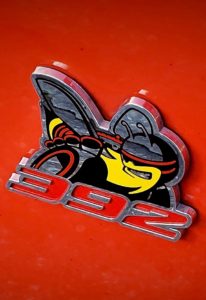 We may want a 797 horsepower ’20 Dodge Challenger SRT Hellcat Redeye, but what if our budget doesn’t stretch that far for a monster musclecar – $72,000! No problem. Dodge has an answer: A Challenger Hellcat Redeye that can sprint to 60 mph in under 3.5 seconds, run the quarter-mile (when equipped right) in 10.8 seconds, and top out at just over 200 mph. My own test of a ‘16 Hellcat with 707 horsepower netted 0 to 60-mph in 3.6 seconds. Our 4,308-pound 6.4-liter V-8 R/T Scat Pack with 485 horsepower @ 6,100 rpm, and 475 pound-feet of torque @ 4,100 rpm SCAT PACK WIDEBODY: DODGE CHALLENGER R/T, is smack in the middle.
We may want a 797 horsepower ’20 Dodge Challenger SRT Hellcat Redeye, but what if our budget doesn’t stretch that far for a monster musclecar – $72,000! No problem. Dodge has an answer: A Challenger Hellcat Redeye that can sprint to 60 mph in under 3.5 seconds, run the quarter-mile (when equipped right) in 10.8 seconds, and top out at just over 200 mph. My own test of a ‘16 Hellcat with 707 horsepower netted 0 to 60-mph in 3.6 seconds. Our 4,308-pound 6.4-liter V-8 R/T Scat Pack with 485 horsepower @ 6,100 rpm, and 475 pound-feet of torque @ 4,100 rpm SCAT PACK WIDEBODY: DODGE CHALLENGER R/T, is smack in the middle.
The R/T Widebody wakes up the neighborhood with remote start on the key fob, its HEMI barking lustily to life. Our 5,000-mile-old coupe had a TorqueFlite eight-speed automatic with manual mode and paddle shifters, but a manual is available. It also had Drive Mode, which configures transmission, paddle shifters, suspension, traction control and steering feel in Sport, Track, Custom or Auto settings. The first two stiffen suspension and steering feel, speed up shifts, back off traction control and enable paddle shifters, Custom lets you adjust all that, or Auto reacts to road and driver, with economy shifts and no paddles allowed. There’s also an easy-to-use launch control button.
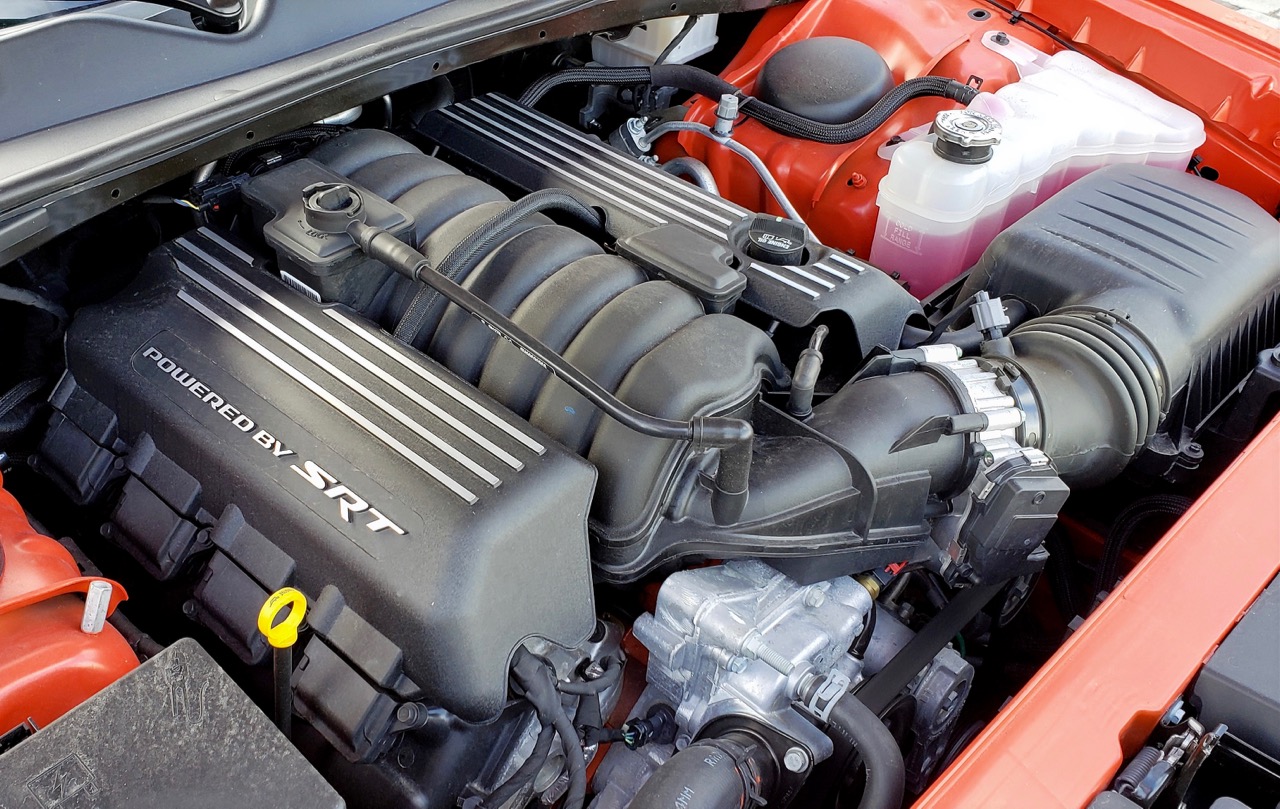 Auto gave us ample power for any use, passing accessible as it tried not to downshift for economy. Sport was a daily choice with big power from throttle tip-in, and quicker downshifts to get more. We consistently saw 60 mph in 4.8 seconds, short strips of rubber at launch. Track mode gave full power immediately, plus tighter steering feel and very sharp-edged suspension response.
Auto gave us ample power for any use, passing accessible as it tried not to downshift for economy. Sport was a daily choice with big power from throttle tip-in, and quicker downshifts to get more. We consistently saw 60 mph in 4.8 seconds, short strips of rubber at launch. Track mode gave full power immediately, plus tighter steering feel and very sharp-edged suspension response.
Then there’s launch control – tap the console button, hold brake and gas, then the gauge display says “Go.” It launched hard with wheelspin off the line, then traction control caught. We had more wheelspin in first-to-second, a slight sideways wiggle as we hit 60 mph in 4.4 seconds, and 100 mph in 9.4. The SCAT PACK WIDEBODY: DODGE CHALLENGER R/T bellowed mightily, each decisive shift accompanied by an exhaust “VRRRUMPP” – subtle this isn’t. The car’s traction control handled wheelspin well when left on, or even when partway off in Sport. In Track and Sport modes, the engine blipped clean downshifts, never going into the wrong gear when asked to work, staying in gear when needed. We nudged 18-mpg on premium on the highway, but dipped to 11 mpg after playing in Sport.
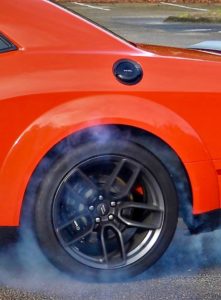 Challengers start with independent short/long-arm front suspension, and a five-link independent rear with gas-charged Bilstein ADS shock absorbers. Our R/T Scat Pack Widebody is 3.5-inches wider with those Hellcat-like flares, which means bigger Pirellis as well as our three-mode Adaptive Damping. The result, even during a mostly damp weekend of long-distance holiday driving, was supple and well mannered.
Challengers start with independent short/long-arm front suspension, and a five-link independent rear with gas-charged Bilstein ADS shock absorbers. Our R/T Scat Pack Widebody is 3.5-inches wider with those Hellcat-like flares, which means bigger Pirellis as well as our three-mode Adaptive Damping. The result, even during a mostly damp weekend of long-distance holiday driving, was supple and well mannered.
The go-to for highway and commuting use was Auto, which was firmly sprung but nicely buffered as it absorbed bumps and asphalt patches quickly, a quick-yet-supple edge to rebound. When curved and slightly hilly roads beckoned on a dry drive, Sport was the choice, backing off traction control just enough as the ride got firmer, a hint of compliance on tightly-handled rebound off bumps. It was a bit too firm for daily use on so-so roads, but didn’t beat us up. When set in Track mode, it really tightened the ride, knife-edged with super quick rebound, just a bit too hard for daily driving. But the stiff body structure uttered nary a creak over any bumps.
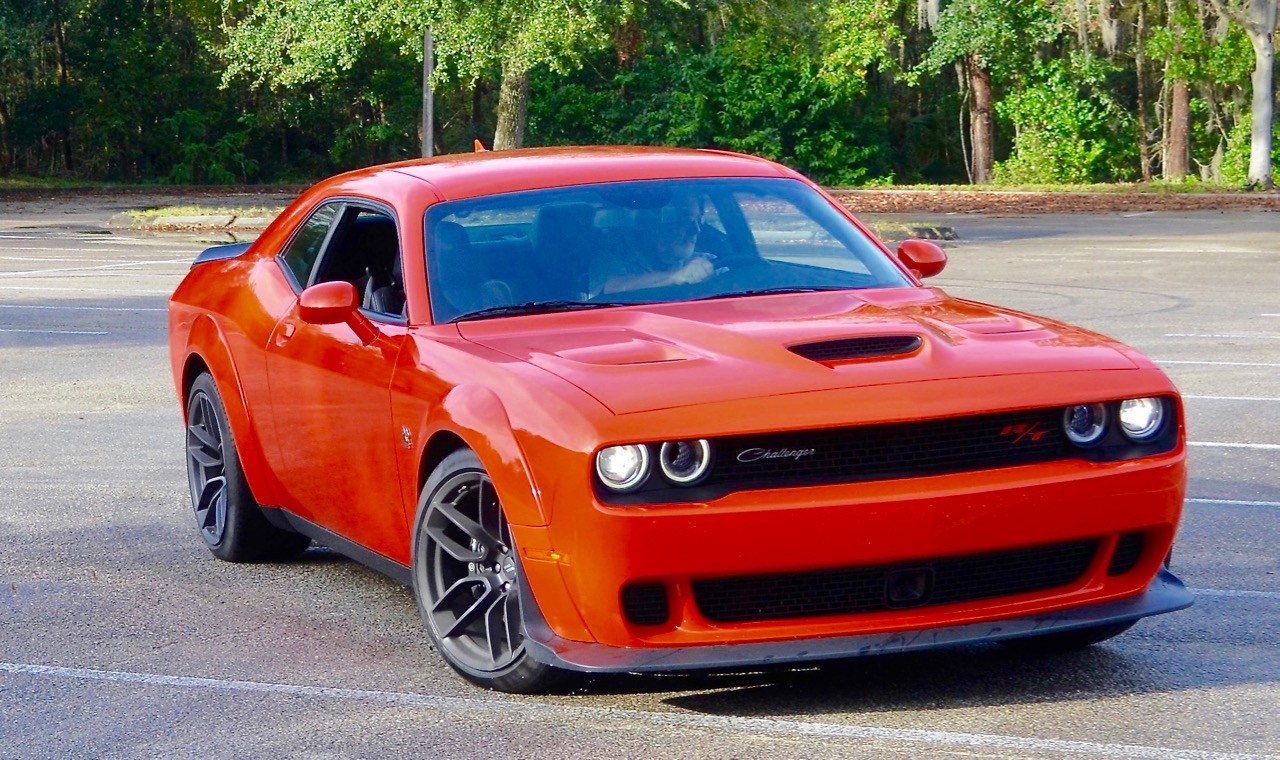 With the wider patch of Pirelli P-ZEROs, those winding back roads saw the R/T in its element, aided by the Widebody’s added rubber and suspension. In Sport, the rear stayed settled in turns when bobbled. It didn’t feel nose-heavy, despite its 55/45-front/rear bias with a HEMI up there. I could tap a downshift as I braked into a curve, then power through with no issue. It danced very well, wider track and Pirellis keeping it glued better than past, skinner Challengers.
With the wider patch of Pirelli P-ZEROs, those winding back roads saw the R/T in its element, aided by the Widebody’s added rubber and suspension. In Sport, the rear stayed settled in turns when bobbled. It didn’t feel nose-heavy, despite its 55/45-front/rear bias with a HEMI up there. I could tap a downshift as I braked into a curve, then power through with no issue. It danced very well, wider track and Pirellis keeping it glued better than past, skinner Challengers.
In tighter corners, the wider track and extra rubber gave youth to Challenger’s dated platform and let the Mercedes-derived rear axle from the late 1990s shine. It powered through 90-degree corners with minimal body lean, throttle easy to play so the rears delivered without breakaway. Power on a bit more through a turn and the rears would break, quickly caught with some counter-steer and throttle. Pushed harder on our skid pad, the SCAT PACK WIDEBODY: DODGE CHALLENGER R/T oversteer was easy to induce via throttle with Sport’s reduced traction control, but just as easy to catch and play with more grip and less understeer than our last outing in a standard Challenger.
 In the wet in any mode, the back end can break loose. I could chirp the rear rubber any time in the dry too, even when I thought I was being gentle – it brought out the hooligan in me. The Brembos bit hard and clean, stopping quickly without drama and no fade after repeated use. Power steering had a precise and well-weighted feel in Auto, and firmed up nicely in Sport or Track, a tight turning radius as well.
In the wet in any mode, the back end can break loose. I could chirp the rear rubber any time in the dry too, even when I thought I was being gentle – it brought out the hooligan in me. The Brembos bit hard and clean, stopping quickly without drama and no fade after repeated use. Power steering had a precise and well-weighted feel in Auto, and firmed up nicely in Sport or Track, a tight turning radius as well.
The G-meter claimed .77Gs on launch, an impressive 1.19Gs on braking, 1.04Gs in left-hand turns, and .94Gs on right-handers. It is a muscle car with more rubber on the road, its added width and adaptive suspension converting this car into a comfortable touring machine, or a snarling-yet-controllable beast.
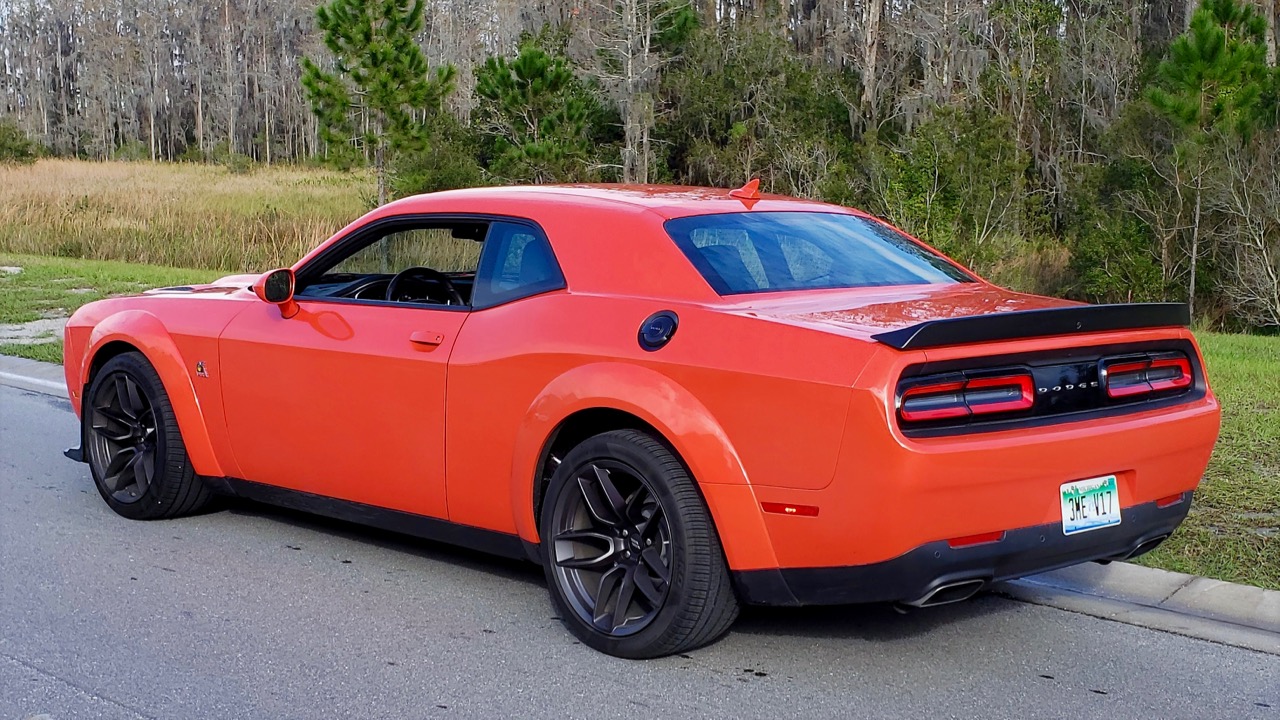 Dodge’s Challenger still nails its smooth, very retro design despite having barely changed since its intro in 2008. The R/T Scat Pack Widebody gained immense presence in Gomango (lightly metallic orange) paint with huge hood scoop and heat extractors borrowed from Hellcat, almost ground-scraping air dam, and classic long-nose/short-tail shape. And the Hellcat’s Widebody flares only made it look meaner.
Dodge’s Challenger still nails its smooth, very retro design despite having barely changed since its intro in 2008. The R/T Scat Pack Widebody gained immense presence in Gomango (lightly metallic orange) paint with huge hood scoop and heat extractors borrowed from Hellcat, almost ground-scraping air dam, and classic long-nose/short-tail shape. And the Hellcat’s Widebody flares only made it look meaner.
 The slim inset black grille has quad headlights with LED DRL rings, the inside pair doubling as air intakes, carbon fiber tubes illuminated within for an evil look. A wide lower intake has side scoops over a deep air dam that flows into the front flares. They frame P305/35ZR20-inch Pirelli PZERO rubber on thin-spoked black alloy wheels that expose huge 14.2-inch front/13.8-inch rear vented and slotted disc brakes with Brembo calipers. The flanks’ design line flows past 392 Bee emblems on front fenders and around rear fenders. Slim rectangular LED taillights look good in black, while twin square exhaust tips live in a dark lower fascia.
The slim inset black grille has quad headlights with LED DRL rings, the inside pair doubling as air intakes, carbon fiber tubes illuminated within for an evil look. A wide lower intake has side scoops over a deep air dam that flows into the front flares. They frame P305/35ZR20-inch Pirelli PZERO rubber on thin-spoked black alloy wheels that expose huge 14.2-inch front/13.8-inch rear vented and slotted disc brakes with Brembo calipers. The flanks’ design line flows past 392 Bee emblems on front fenders and around rear fenders. Slim rectangular LED taillights look good in black, while twin square exhaust tips live in a dark lower fascia.
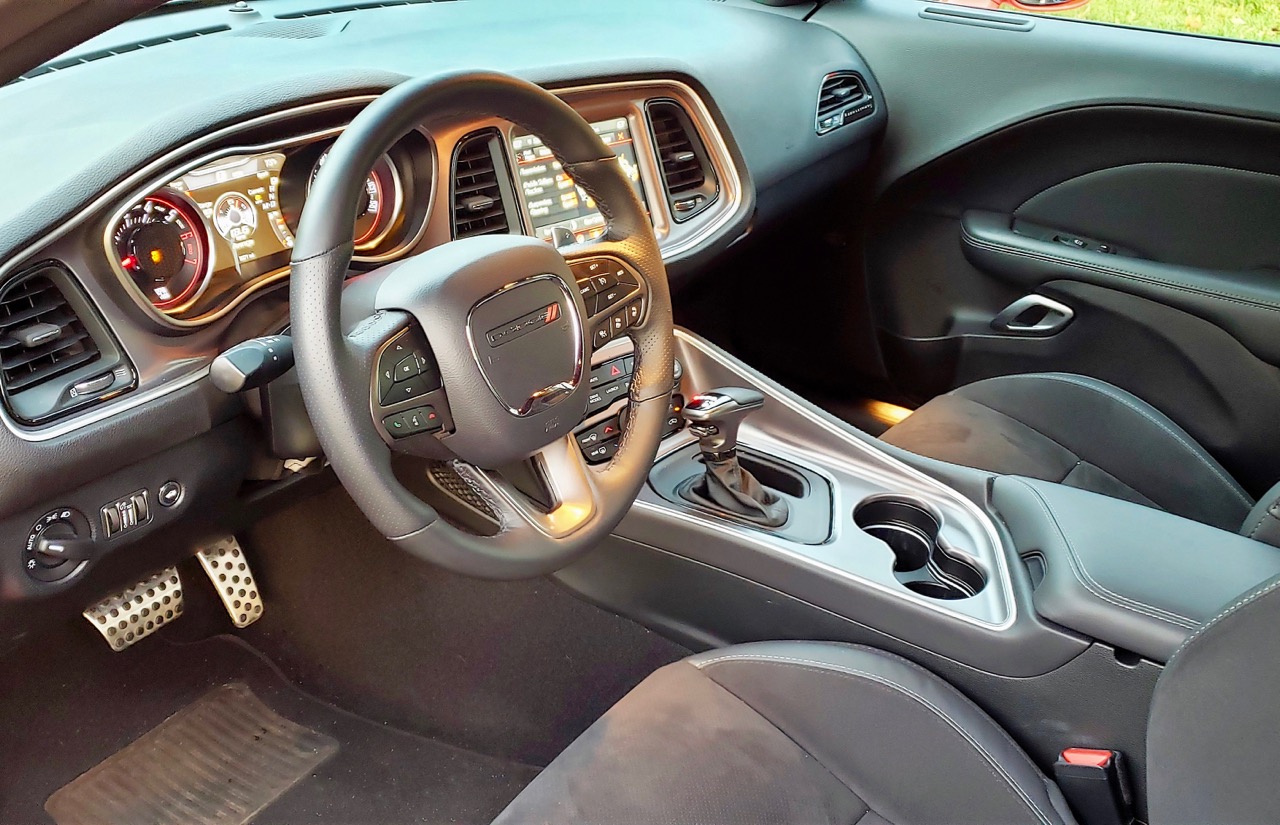 The look was loved, many asking if our SCAT PACK WIDEBODY: DODGE CHALLENGER R/T was the Hellcat. And friends who love MOPAR, including one with a six-speed manual Hellcat, looked ours over from air dam to spoiler. The Challenger has also been the most usable, if heaviest, of the three Pony cars, based on the four-door Charger. The interior looks pretty much the same bar a center console angled toward the driver, like in 1970. Black, smooth and padded, the dashtop gets silver accents, clean in design and well executed in function. The meaty leather-clad steering wheel gets power tilt and telescope with small alloy paddle shifters and audio controls in back. Gauge package is a precise analog/digital mix, dished 180-mph speedometer and 7,000-rpm tach flanking a color screen with audio, navigation, performance, fuel economy, engine gauges and other info available via left spoke buttons.
The look was loved, many asking if our SCAT PACK WIDEBODY: DODGE CHALLENGER R/T was the Hellcat. And friends who love MOPAR, including one with a six-speed manual Hellcat, looked ours over from air dam to spoiler. The Challenger has also been the most usable, if heaviest, of the three Pony cars, based on the four-door Charger. The interior looks pretty much the same bar a center console angled toward the driver, like in 1970. Black, smooth and padded, the dashtop gets silver accents, clean in design and well executed in function. The meaty leather-clad steering wheel gets power tilt and telescope with small alloy paddle shifters and audio controls in back. Gauge package is a precise analog/digital mix, dished 180-mph speedometer and 7,000-rpm tach flanking a color screen with audio, navigation, performance, fuel economy, engine gauges and other info available via left spoke buttons.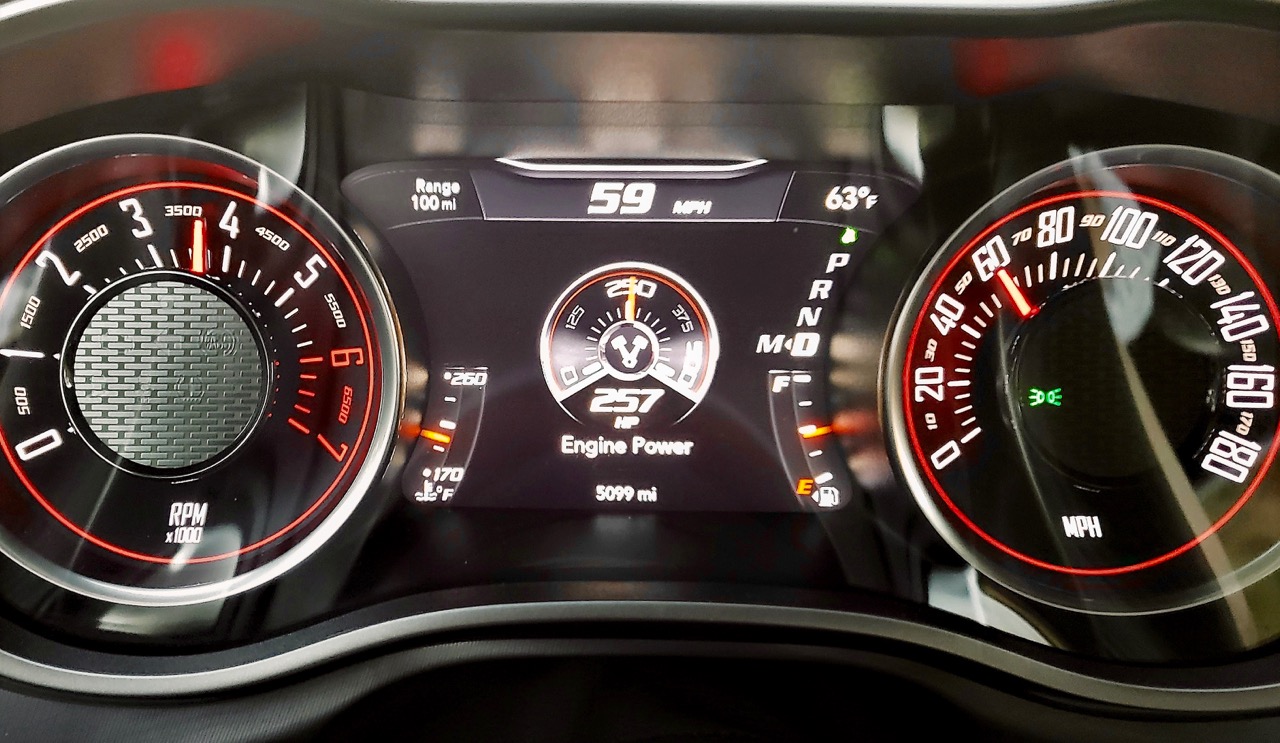
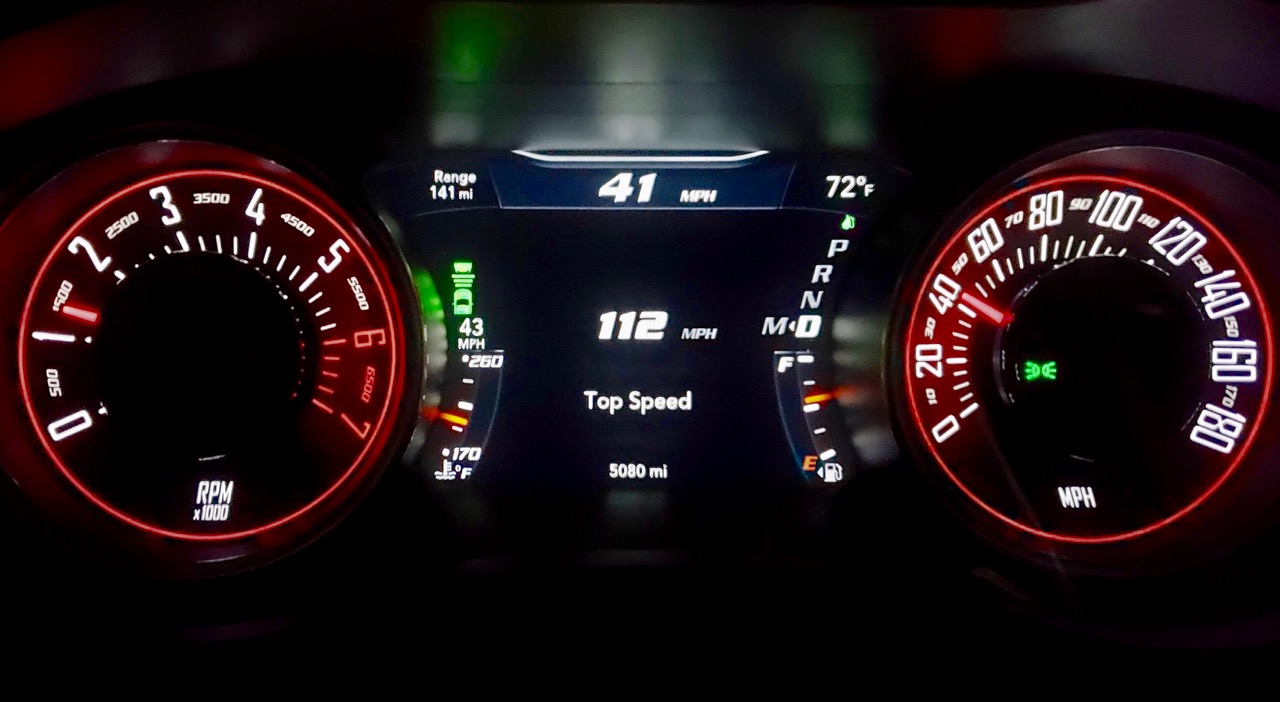 The center 8.4-inch touchscreen has navigation, audio, Travel Link information and more, the map with simple, dated graphics. Its Performance Page screen offers quarter-mile timers, gauge readouts, engine dynamometer, acceleration/braking and handling G-forces and important engine info, a snapshot function to save readouts on a memory stick. The 506-watt, 9-speaker Alpine audio system had strong, clear sound.Our Challenger’s black leather and suede bucket seats were firm and supportive. Access to the back seat was a bit tight. Once there, decent head and leg room for two, while the trunk was very usable for a weekend trip.
The center 8.4-inch touchscreen has navigation, audio, Travel Link information and more, the map with simple, dated graphics. Its Performance Page screen offers quarter-mile timers, gauge readouts, engine dynamometer, acceleration/braking and handling G-forces and important engine info, a snapshot function to save readouts on a memory stick. The 506-watt, 9-speaker Alpine audio system had strong, clear sound.Our Challenger’s black leather and suede bucket seats were firm and supportive. Access to the back seat was a bit tight. Once there, decent head and leg room for two, while the trunk was very usable for a weekend trip.
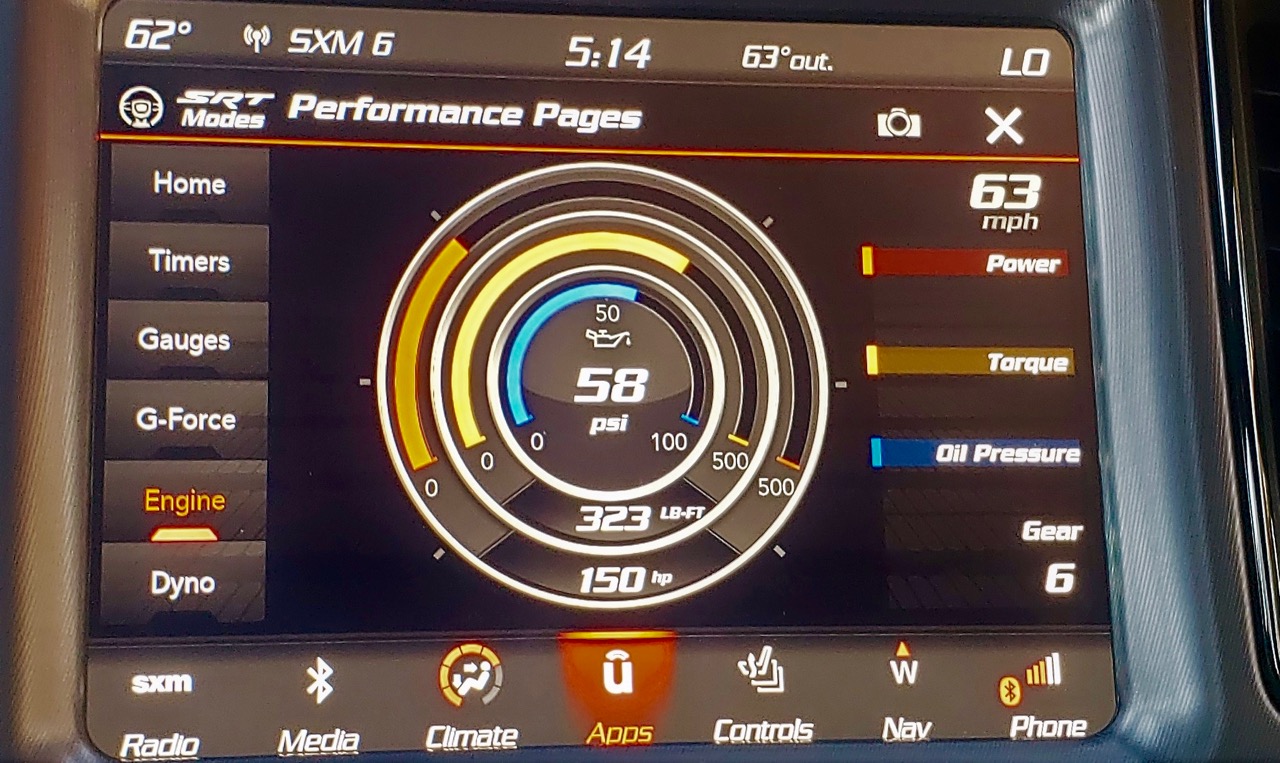 A base Challenger SXT starts at $28,095, while the Hellcat Redeye Widebody starts at $77,945. Our tester started at $39,245 with the 6.4-liter V-8, basic exterior and interior. The R/T Scat Pack Widebody option is $6,000 with fender flares, wider Pirellis, adaptive suspension and 3.09 rear. Add $1,695 for the Plus Package with cooled Nappa leather and suede sports seats and power tilt/telescoping steering wheel; $1,295 Technology Group with adaptive cruise, auto-high beam and wipers and collision alarm; $1,095 Driver Convenience Package with HID headlights; $995 Alpine audio; $1,595 8-speed automatic, and more. Final price: $54,210.
A base Challenger SXT starts at $28,095, while the Hellcat Redeye Widebody starts at $77,945. Our tester started at $39,245 with the 6.4-liter V-8, basic exterior and interior. The R/T Scat Pack Widebody option is $6,000 with fender flares, wider Pirellis, adaptive suspension and 3.09 rear. Add $1,695 for the Plus Package with cooled Nappa leather and suede sports seats and power tilt/telescoping steering wheel; $1,295 Technology Group with adaptive cruise, auto-high beam and wipers and collision alarm; $1,095 Driver Convenience Package with HID headlights; $995 Alpine audio; $1,595 8-speed automatic, and more. Final price: $54,210.
Bottom line: a sleek shape that remembers its past very well, with cool fender flares and aggressive stance coupled with a very willing HEMI – I almost didn’t miss the Hellcat!
For more information about the latest Challenger Portfolio from Dodge including the SCAT PACK WIDEBODY: DODGE CHALLENGER R/T, please visit https://www.dodge.com/2020/challenger.html
